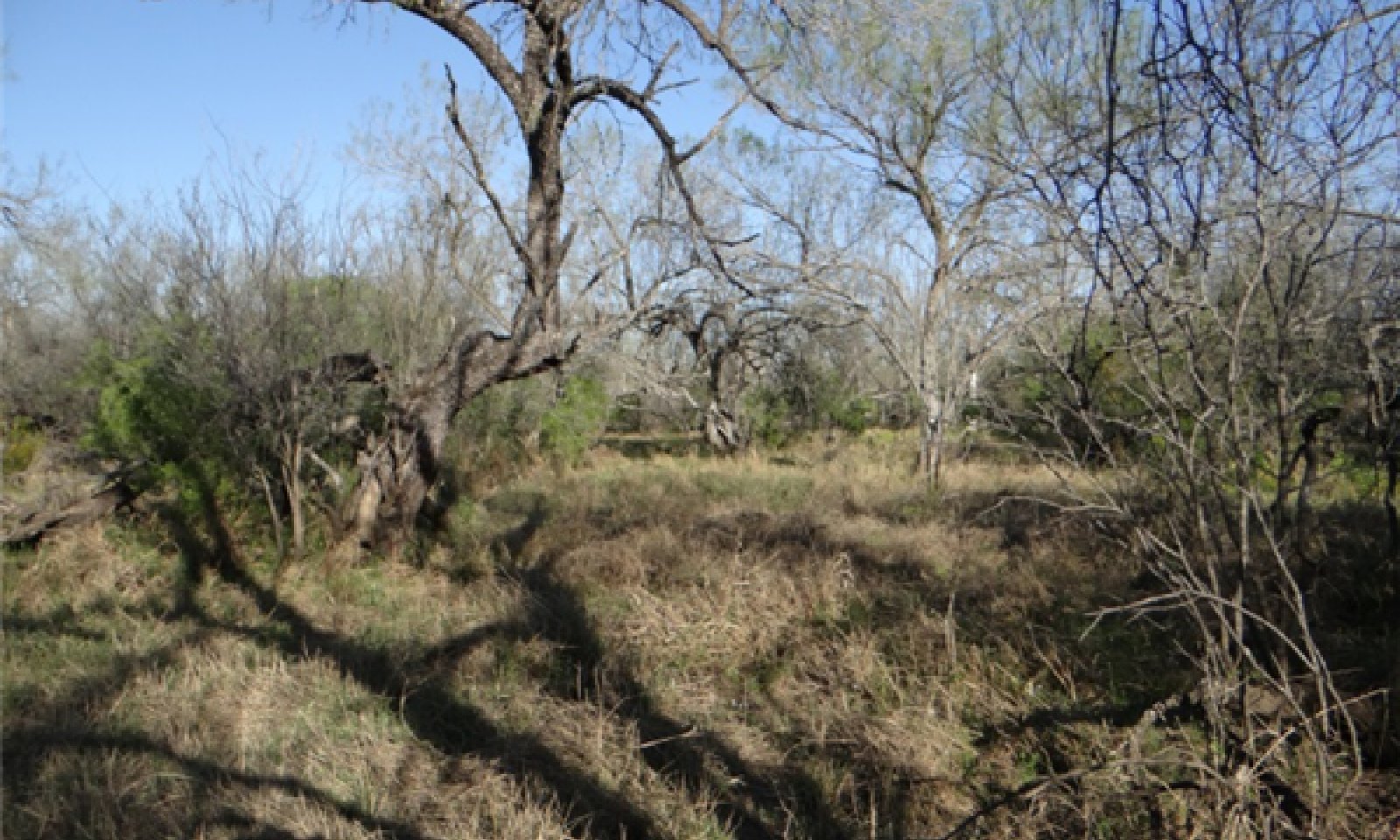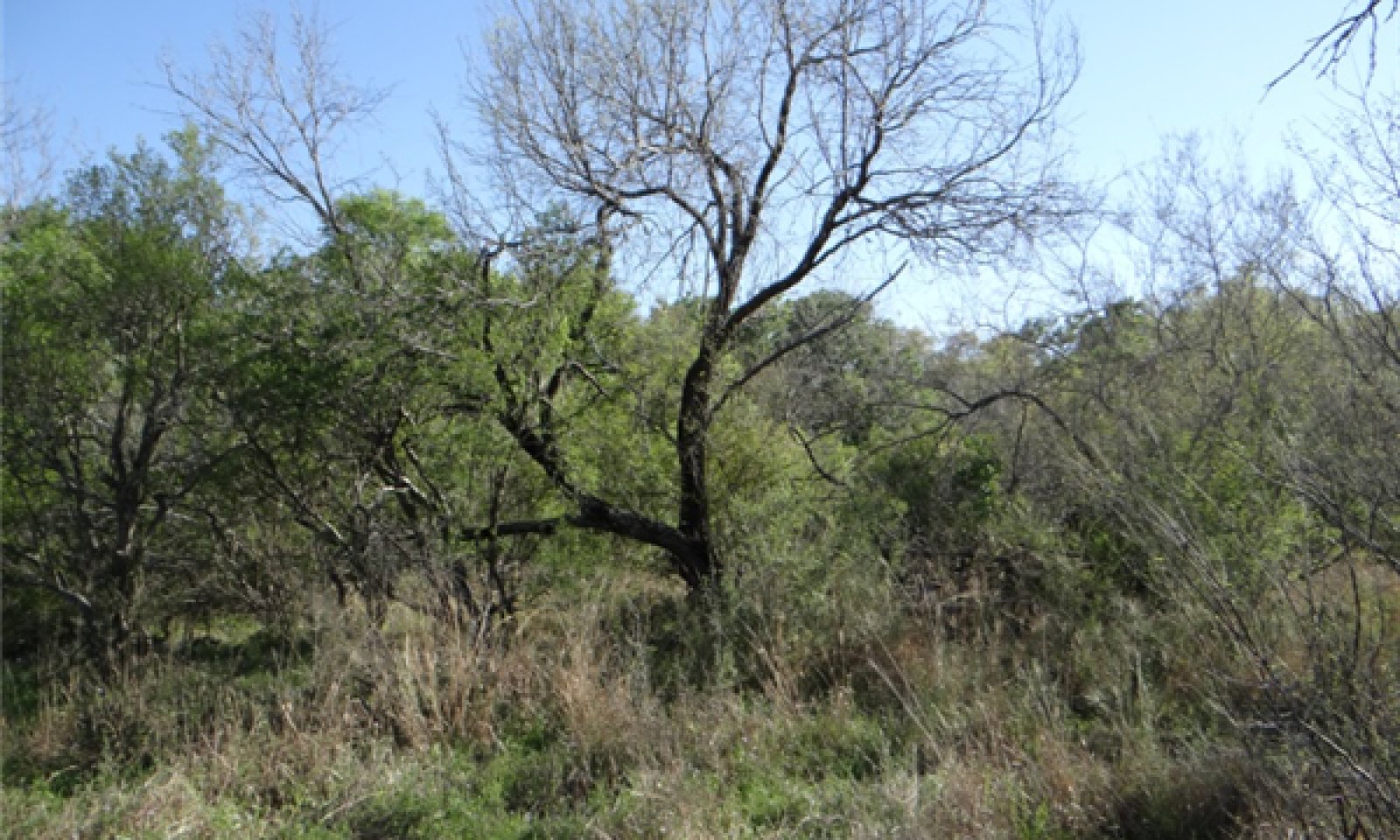
Clayey Bottomland
Scenario model
Current ecosystem state
Select a state
Management practices/drivers
Select a transition or restoration pathway
-
Transition T1A
Absence of disturbance and natural regeneration over time, coupled with excessive grazing pressure
More details -
Transition T1B
Extensive soil disturbance followed by seeding improved forage species
More details -
Restoration pathway R2A
Reintroduction of historic disturbance return intervals
More details -
Transition T2A
Extensive soil disturbance followed by seeding improved forage species
More details -
Transition T3A
Absence of disturbance and natural regeneration over time
More details -
No transition or restoration pathway between the selected states has been described
Target ecosystem state
Select a state
State 1
Savannah




Description
The Savannah State consisted of approximately 70 percent grasses, 20 percent woody plants and a 10 percent composition of forbs by air-dry weight. For interpretive purposes, the woody crown canopy can be approximately 10 to 40 percent. Two community phases exist; the Tallgrass Savannah Community and the Mixedgrass Savannah Community.
Submodel
State 2
Shrubland





Description
The Woodland/Shrubland state consists of two communities; Tree/Shrubland Community (2.1) with a brush canopy of 40-70 percent, and the Tree/Shrubland Community (2.2) with a brush canopy of >70 percent. These communities are mixed grass communities with a shrub canopy of mixed brush and trees with some herbaceous plants throughout the interspaces.
Submodel
Mechanism
The Savannah State will cross a threshold to Shrubland State with abusive grazing, no brush management, or fire. Severe drought is also a significant factor to accelerate this transition. In State 2, more rainfall is being utilized by woody plants than the herbaceous plants. Because of the increased canopy, sunlight is being captured by the woody plants and converted to energy instead of the herbaceous plants.
Mechanism
The transition to the Converted Land State is triggered by major ground disturbing mechanical treatment and planting to native or introduced forages. Planting is usually done following brush management.
Mechanism
If the management goal is to restore to State 1, significant inputs of energy will be needed. An integrated approach to Brush Management (Scifres et. al. 1985) with mechanical treatment, herbicides and fire will initially reduce the woody species providing opportunity for at least partial recovery of the hydrologic cycle and the energy cycle. Seeding may be needed and can be done in conjunction with ground disturbance methods of brush management. A return to State 1 within a management time frame will be next to impossible when considering returning the trees to their original stature.
Relevant conservation practices
| Practice | External resources |
|---|---|
|
Brush Management |
|
|
Prescribed Burning |
|
|
Range Planting |
|
|
Prescribed Grazing |
Mechanism
The transition to the Converted Land State is triggered by major ground disturbing mechanical treatment and planting to native or introduced forages. Planting is usually done following brush management.
Mechanism
The transition from the Converted Land State to the Shrubland State is triggered by neglect or no management over long periods of time. Shrubs re-establish from the seed bank and introduction from wildlife and livestock. A complete return to a previous state is not possible if adapted, non-native plants have been established or if the soil health has significantly deteriorated. It will also take 20 to 30 years for the large trees to return.
Model keys
Briefcase
Add ecological sites and Major Land Resource Areas to your briefcase by clicking on the briefcase (![]() ) icon wherever it occurs. Drag and drop items to reorder. Cookies are used to store briefcase items between browsing sessions. Because of this, the number of items that can be added to your briefcase is limited, and briefcase items added on one device and browser cannot be accessed from another device or browser. Users who do not wish to place cookies on their devices should not use the briefcase tool. Briefcase cookies serve no other purpose than described here and are deleted whenever browsing history is cleared.
) icon wherever it occurs. Drag and drop items to reorder. Cookies are used to store briefcase items between browsing sessions. Because of this, the number of items that can be added to your briefcase is limited, and briefcase items added on one device and browser cannot be accessed from another device or browser. Users who do not wish to place cookies on their devices should not use the briefcase tool. Briefcase cookies serve no other purpose than described here and are deleted whenever browsing history is cleared.
Ecological sites
Major Land Resource Areas
The Ecosystem Dynamics Interpretive Tool is an information system framework developed by the USDA-ARS Jornada Experimental Range, USDA Natural Resources Conservation Service, and New Mexico State University.

